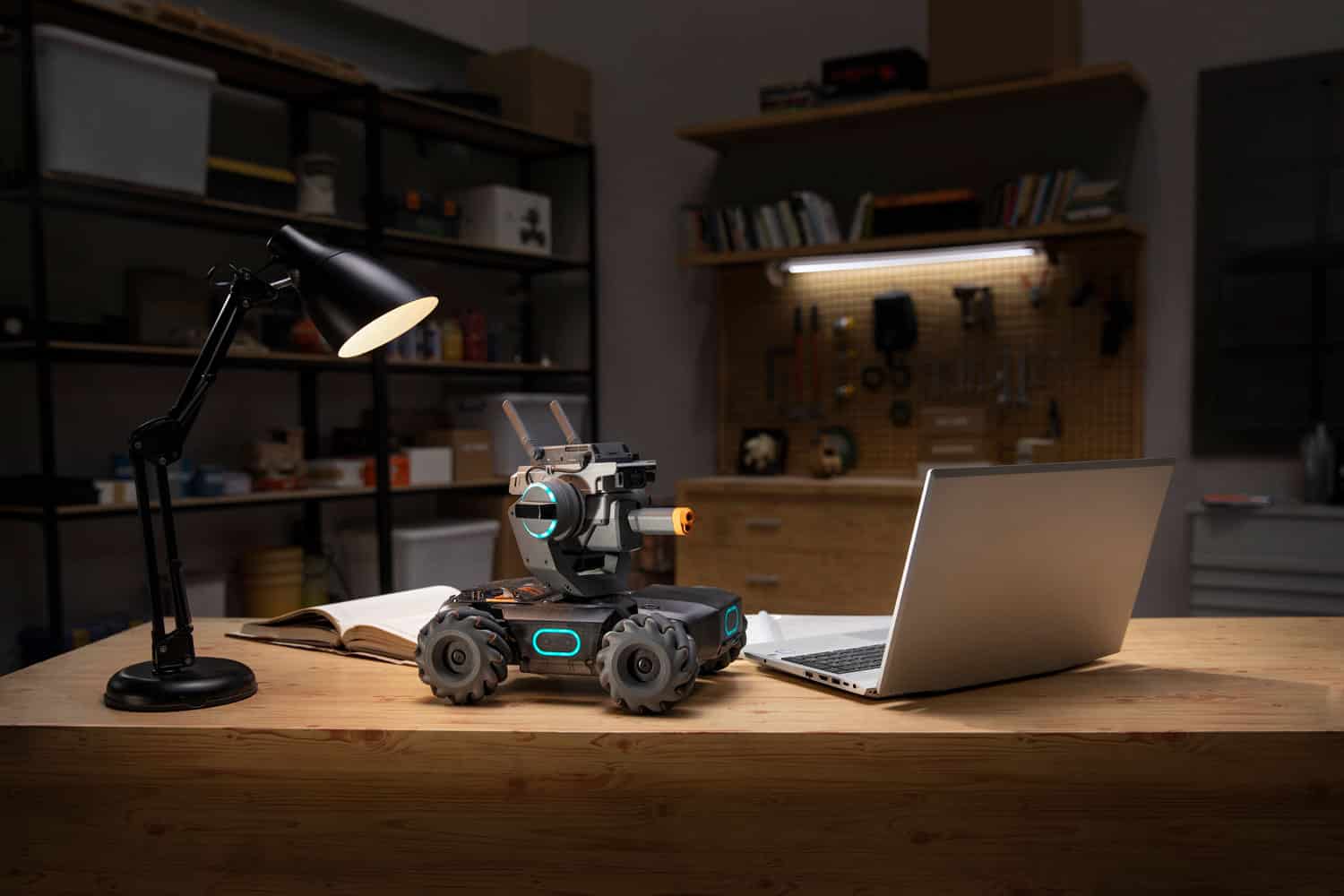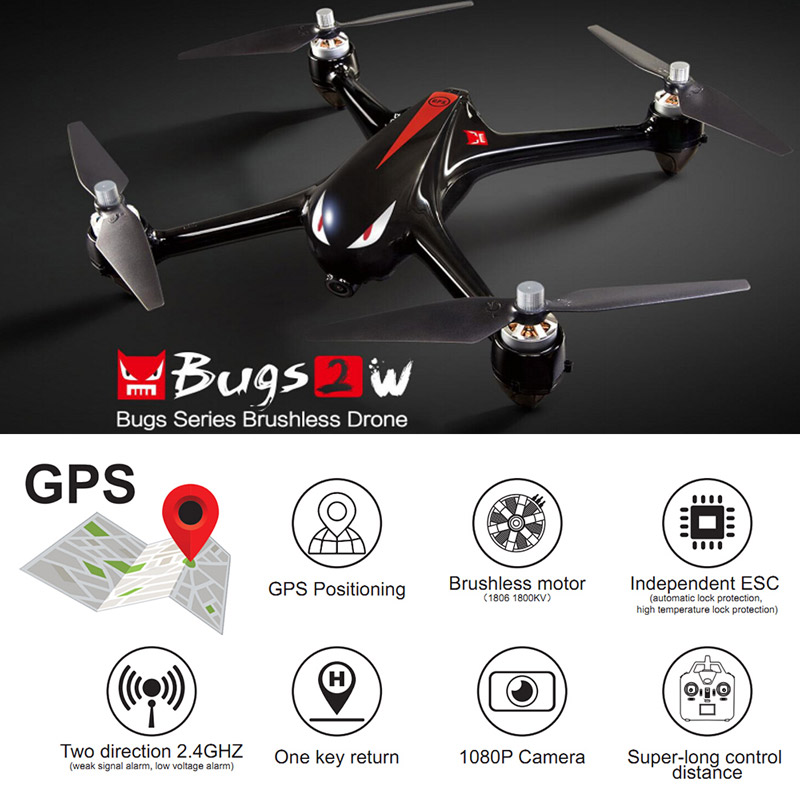After several days of smoke bombs, DJI Innovation finally released its first educational robot today: the Mech Master RoboMaster S1. As early as three years ago, DJI has started the research and development of S1, and the education market is another blue ocean in the DJI innovation market. It is also a major breakthrough in another field after the drone system and handheld imaging system.
DJI officially evaluates the Mech master RoboMaster S1 as follows. This is an intelligent programming product for children over 14 years old. It is equipped with various sensors such as light, sound and power, and has a powerful central processor combined with a custom brushless motor. The omni-directional mobile chassis and high-precision pan/tilt allow users to learn robotics, artificial intelligence and programming knowledge while enjoying the fun of competition. But in fact, the author sees that the Mecha master RoboMaster S1 should not be a simple and remotely programmable programming toy. He should be a stepping stone for children’s standard systemized robot products.
I have to say that this is a very smart robot. The S1 has up to 31 sensors that can sense images, light, sound and vibration. The FPV camera combines machine vision technology to allow the S1 to recognize a wide range of objects; the six-piece induction armor allows the S1 to sense physical strikes; the microphone allows it to recognize sound; and the infrared sensor allows it to receive infrared signals from another S1.
The rich sensor gives S1 “visual, auditory and tactile”, while the powerful intelligent central control – the five-core SOC Cortex-A processor allows S1 to simultaneously process large amounts of data while performing multiple tasks; S1 uses The industrial-grade CAN bus is connected to the intelligent central control and various components, which not only ensures the speed and stability of signal transmission, but also makes the S1 more scalable. In fact, among many educational robots, almost no manufacturer in the C-end market has modified the industrial-grade CAN bus to consumer-grade products. It is precisely because of this that S1 has a very high expansion and rich interface.
The S1 is modular in design, allowing users to understand the mechanical structure of the robot during the assembly process and enjoy the fun of creation. In addition, S1 has reserved six PWM expansion interfaces to help advanced users develop unique expansion hardware for S1.
At present, the Mecha Master RoboMaster S1 can complete the following six different intelligent recognition functions: line recognition for auto-cruise, tag recognition for up to 44 modes, active follower recognition, applause recognition, gesture recognition, and robot recognition. Six types of intelligent recognition features give S1 a rich application scenario. By programming the gesture recognition and body recognition functions, the user can let the S1 automatically shoot around the pedestrians and harvest the interesting images with unique perspectives. By arranging the visual logo on the door, the S1 can also be turned into a “guard” when the door is opened or visually identified. When it falls, S1 will automatically send out an alarm or patrol the line to the bedroom alarm. From the basic pedestrians to the automatic driving algorithm program that needs to be integrated with six types of artificial intelligence modules, the Mech Master S1 builds a platform for users to experience artificial intelligence technology from easy to difficult.
It is very important to motivate children to have an interest in the product. Let the teenagers start from video games and short videos, driven by interest to learn, delve into and practice knowledge. Based on the above thinking, DJI designed a variety of competitive modes for S1, and encouraged users to write exclusive “custom skills” to release in the competition. On the basis of mastering programming skills, the flexible practice of mathematics and physics knowledge will become a twist. The key to the game.
In the single player mode, the user can challenge the two modes of fixed-point shooting and mobile shooting. After placing the visual label on its own, the user can manipulate the S1 to shoot the tag in a stationary or moving state to challenge the high score; or use the self-written code to let the S1 automatically identify the specific tag to gain an advantage. In the multiplayer mode, S1 sets up both racing and chaos. In the racing mode, users can get a true “Need for Speed” experience through the FPV screen. The S1 participating in the competition needs to scan the visual labels one by one, and the user who completes the scanning at the fastest speed is the winner, and the user who has the ability to write the “one-key drift” program according to the track design will become the winning favourite.
The chaotic mode ported the wonderful experience of FPS games to the physical world. The S1 involved in the big chaos must attack other rc robots and self-defense, and use terrain and mobility to seek victory. If you want to win, you can continue to train your own proficiency. You can also learn how to call the visual module, learn to debug the PID parameters of the automatic control, and let your S1 automatically identify the target and lock the attacking opponent to gain the advantage of the game.
In the multiplayer mode, S1 can also gain “stun”, “electromagnetic interference”, “speed”, “invincible” and other skills to attack opponents or protect themselves by identifying visual tags, combining interesting crystals. The experience of bombing or infrared shooting makes learning and entertainment truly one.
As an educational robot, the Mech Master S1 is equipped with a wealth of teaching resources. The project-based course “Master’s Road” conveys programming thinking through easy and fun tasks, teaching robotics and artificial intelligence knowledge, and even a zero-based user can easily get started and gradually grow into a programming master; the online course “Mecha Academy” includes video courses. With programming guide. The vivid video course focuses on the principles of robotics, artificial intelligence, and programming knowledge to help users understand the relevant subject knowledge in depth; the programming guide page provides detailed explanations of each module, making it easy for users to enter the world of the program.
The above courses are free of charge in S1’s companion app “RoboMaster”. DJI will continue to develop a variety of courses to meet the learning needs from entry to professional.
S1 supports both Scratch 3.0 and Python programming languages. Scratch 3.0 is a widely used visual programming language in the field of robot education and is widely used in global primary and secondary robot education. Python is a widely used programming language in the field of artificial intelligence development. With Python, users with a foundation in programming technology can develop more high-level creative features for S1 and hone their skills in S1’s flexible programming platform.
In addition, the Mech Master S1 also provides users with a convenient and diverse programming environment. The RoboMaster app works on multiple platforms such as iOS, Android, Windows, etc. Users can easily write their own programs without additional configuration environment, and can share the program to friends with one click.




High-mined publish!